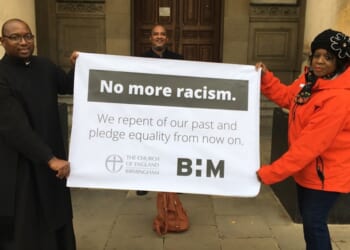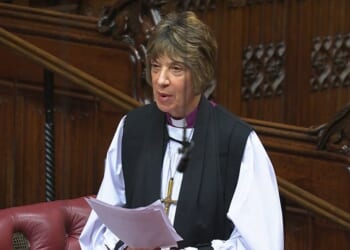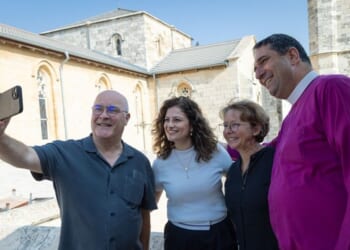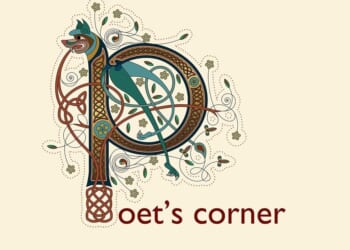THE Consistory Court of the diocese of Carlisle has granted a faculty, despite the opposition of the diocesan advisory committee (DAC), for a hatchment to be hung in St Michael’s, Bowness-on-Solway, in memory of Dr Alistair M. T. Maxwell-Irving, who died on 29 February 2024.
A hatchment is a memorial in the form of an armorial shield painted on a square or lozenge-shaped frame. In the present case, the hatchment is intended to be lozenge-shaped, showing Dr Maxwell-Irving’s coat of arms.
The church is Grade II* listed, and its oldest parts date back to the 12th century. There are already several memorials inside the church on its walls and windows.
The parochial church council (PCC) had supported the faculty application, and the Church Buildings Council had stated that it considered the impact of the proposed hatchment on the church to be “minimal,” and so it was also content.
The majority of the DAC, however, did not recommend the application for approval. While the DAC accepted that the proposed hatchment was “perfectly proper and traditional in its artistic approach”, the majority of its members were “not persuaded that it was an appropriate memorial for our current age”. The DAC found that the proposal was “distasteful and potentially anachronistic”, and that Dr Maxwell-Irving’s connection with the parish was insufficient to justify the erection of a memorial to him in the church.
The Diocesan Chancellor, the Worshipful James Fryer-Spedding, said that it was clear from a decision of the Court of Arches that faculties for memorials within churches could not be “freely or extensively granted” and “should be regarded as a special privilege reserved for very exceptional cases”.
In considering whether this case was exceptional, the Chancellor was required to take into account not only whether Dr Maxwell-Irving had made an outstanding contribution to the local community, the church, the country, or humankind, but also whether there was a family history or tradition of such memorials.
In view of the DAC’s doubts, the Chancellor considered Dr Maxwell-Irving’s connection with the church. The Chancellor said that “a person’s connection with a church was capable of being more than simply a question of physical proximity to it”, and families and individuals could have “powerful ties to a church despite not living near it”, for example, through tradition and places of marriage and burial.
For several generations, the Irving family had been very influential in recent centuries in Bowness parish. They had supported St Michael’s with large donations and contributions. There were several significant family memorials in the churchyard. There were three large stained-glass windows in the church in memory of their ancestors. The proposed position for the new hatchment and its explanatory brass plaque was close to those stained-glass windows.
The Chancellor said that, in his view, the hatchment would “continue the family tradition of memorials expressed through the display of a coat of arms”. He took account also of the publicly available tributes to Dr Maxwell-Irving. Taking them together with the strong family association, the Chancellor was satisfied that the exceptionality test was met.
Both Historic England and the DAC had advised that the faculty, if granted, would not result in harm to the significance of the church as a building of special architectural of historical interest. The application had the unqualified and enthusiastic support of the PCC.
As for the DAC’s arguments of supposed anachronism, the Chancellor observed that “what may strike some as anachronistic may equally be regarded by others as a faithful and authentic exposition of a living history, in which continuity with the past is a virtue, not a fault.”
The faculty was granted as sought, to hang a hatchment to Dr Maxwell-Irving above the transept door, adjacent to the Irving family stained-glass window. A heraldic artist, Mark Dennis, has been engaged by Mrs Maxwell-Irving to paint the hatchment.

















